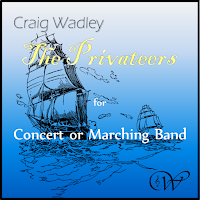Sonar's Riddle

The title of Sonar’s Riddle is an anagram of "Dr. Daniel Ross," and stands as a tribute to a musician known for both his kindness and humor. Dr. Daniel F. Ross (1944-2019) was a Professor of Music at Arkansas State University, where he taught the double reed studio from 1968 to 2018. During his illustrious career, he became known as not only a world-class musician, but an innovator in the field of reed-making with his Ross Gouging Machine. As a performer, he served as Principal Oboist with the Arkansas Symphony and performed with the North Arkansas Symphony, Arkansas Philharmonic Orchestra, Tupelo Symphony, Delta Symphony, Atlanta Symphony, Nashville Symphony, the St. Louis Symphony, and the St. Louis Chamber Music Society. He was a frequent soloist with the Forum Sinfonia of Krakow, Poland, touring with them in the United Stated and Europe. He held the title of Visiting Professor of Oboe at the Academy of Music in Krakow, Poland and has been a soloist with the St. P...






